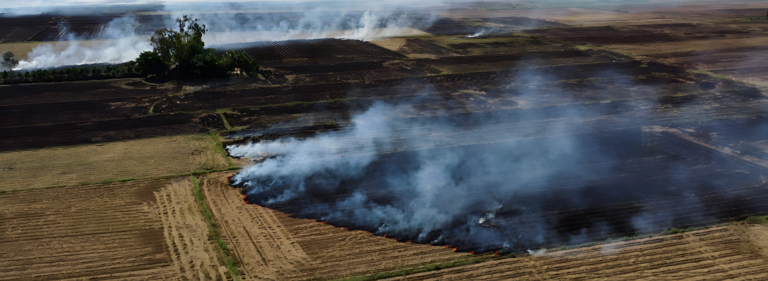
Advancing Locally Led Development through Collective Action and Impact
Collective action and impact is an intentional and agreed-upon process that engages interested parties to take joint actions in support of shared objectives and is promoted by USAID to help achieve a shift in leadership, ownership, decision-making, evaluation and implementation from international to local actors. The approach prioritizes engaging stakeholders directly to build cohesion and supports them in leading efforts to enact their own agendas. Collective impact is not just any form of collaboration but has established processes and structures providing sustained collaboration to take joint action and align the work of participants.
The collective impact approach requires five key characteristics:
- A common agenda that reflects a shared vision for change by coming together to collectively define the problem and create a shared vision to solve it. This requires partners to have a high level of buy-in to a shared vision for change, agreed-upon goals and approaches.
- A shared measurement system where partners agree to track progress in the same way, allowing for continuous improvement and ensures accountability.
- Mutually reinforcing activities that leverage each organization’s strengths and coordinate collective efforts to maximize the end result.
- Continuous communication to build trusting relationships among all participants.
- A backbone organization leads the process of convening and coordinating participating partners and supporting continuous communications among participants. Within the backbone organization, a dedicated team orchestrates the work of the participating organizations.
An example of collective impact in Vietnam from Winrock’s USAID Reducing Pollution activity
Vietnam faces significant challenges in managing and eliminating environmental pollution, such as poor urban air quality, contamination of surface water and groundwater, and ocean plastic pollution. The people of Vietnam are increasingly concerned about their local air and water quality. In response, the Government of Vietnam (GVN) passed the 2020 Law on Environmental Protection and accompanying National Action Plans related to air quality, water conservation, and plastic waste pollution.
Implementing the policy requires broad cooperation of multiple stakeholders such as GVN ministries, the private sector, civil society organizations (CSOs), scientists, academia, and community groups.
Winrock’s USAID Reducing Pollution activity is applying a collective impact approach to synchronize stakeholders’ efforts to support the implementation of the policies.
The project divided the approach into three phases:
- Discovery
- Organizing for Action
- Implementation
Each phase builds upon the other. For example, the discovery phase requires an understanding of the landscape of key players and the existing work underway, baseline data on the issue to develop the case for change. Organizing for action requires that stakeholders work together to establish common goals and shared measures, create a supporting backbone infrastructure, and begin the process of aligning the many partner organizations involved against the shared goals and measures. And implementation requires that stakeholders pursue implementation in a coordinated fashion, systematically collect data, and put in place sustainable processes that enable active learning and adaptation as they track progress toward common goals
The project used its discovery phase to establish a foundation for more locally led where scoping was used to identify priority pollution issues to address, stakeholder champions with an interest in building a collective impact coalition, potential partners, and formalizing Government approval processes. The following briefly outlines the project’s discovery phase and its benefit to establishing a more locally led framework for the project.
In the design of the Reducing Pollution project, the geographic and technical scope was intentionally left open to allow local and diverse stakeholder engagement through participatory consultative processes. As part of the Discovery phase, the first consultation took place with the primary GVN partner, the Vietnam Environmental Administration (VEA), USAID and other technical experts, where ten critical environmental pollution issues were identified. Winrock conducted a stakeholder system mapping exercise to identify broader and more inclusive participation that included local civil society and private sector actors. Winrock facilitated a series of meetings and workshops with local actors to gain a diversity of perspectives around the ten environmental areas that supported their prioritization for the project.
In parallel to the series of meetings and workshops, a local partner, was selected to conduct an Applied Political Economy Analysis (APEA). The APEA included Key Informant Interviews with representatives of central and provincial governments, NGOs, scientists, and private companies. The APEA provided a deeper understanding of the complex political, economic, social, and cultural influences that have created significant environmental pollution challenges in Vietnam and identified entry points and opportunities to address them.
After consolidating all findings from consultative meetings, workshops and APEA, USAID, VEA and Winrock narrowed down the pollution initiatives to a total of six priority areas the project will address.
Benefits from the discovery phase of collective impact for the proejct:
- Aligned the project with host government priorities through a collaborative approach to support future phases of the project and sustainability
- Leveraged expertise across sectors through conducting multiple meetings, repeated interaction, and consistent communication that is building trust among stakeholders
- The APEA allowed the team and partners to carefully consider opportunities and risks while also adding credibility to the final selection of pollution focal topics
- The stakeholder mapping identified key collaboration opportunities and to build on existing partnerships
- Allowed the project to begin to link its three main stakeholder groups – government, private sector and communities
Winrock has entered the next phase of the project and will continue to document benefits of this approach. In the coming months ahead, pollution initiatives will be managed by local organizations that will serve as the backbone organizations to facilitate collaboration among all stakeholders to achieve results. The approach is being viewed by USAID as somewhere between delegated power and local leadership in their locally led spectrum helping to shift more power to local actors to decide how best to address the development challenge. on how best to address the development challenge.
Related Projects

